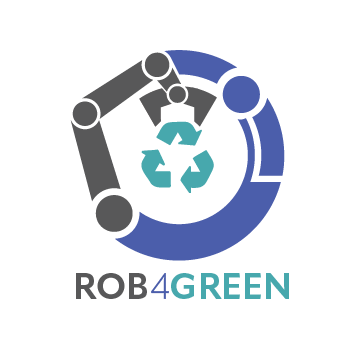Tire Retrading: A Historical Model of Circular Economy
Tire retreading is one of the earliest industrial applications of circular economy (since the early 20th century). The process extends the life of a used tire by replacing the worn tread with a new one. While the concept appears simple, the complexity arises from the many combinations of casings, tread patterns, and retreading methods (mold cure, pre-cure), making it a highly specialized and often misunderstood process that can be applied to every type of tire from passenger car to mining dumpers (the most common applications are for truck and aircraft tires).
We can consider tire retreading in 3 main steps:
• Casing preparation (initial inspection, buffing, skiving/repairing).
• Casing building (filling, new tread application).
• Curing (vulcanisation, final inspection).
While casing building and curing have been widely automated, casing preparation remains largely manual, particularly for tasks such as:
• Inspection (assessing the retreadability of the casing).
• Skiving (removing rust, debris, or damaged cables from all casing zones … following retreader’s specifications).
• Repairing (internal reinforcement using patches).
These operations require physical strength, precision, and endurance in challenging conditions: awkward body positions, dusty environments, and repetitive manual work. Moreover, they demand sustained cognitive attention to meet strict quality requirements — especially in inspection and repair, which are crucial for retread safety and performance.
The Human Factor: Irreplaceable heart of retreading but…
The human, because of his know-how, experience and skills is an important part of the retreading process at every step particularly at skiving. This step remains resistant to full automation because working at skiving station in tire retreading can be compared to a dentist's job (imagine you being a patient of an automatized dentist…). Indeed, each casing is unique and like a dentist diagnosing a patient, the operator must assess and adapt his actions to the casing's specific defects, often invisible at first glance. The unpredictability of injuries, casing materials, and previous treatments makes it difficult to standardize procedures.
While human expertise remains essential, it’s inclusion with the existing technology also:
How could human be guided and supported in manual tasks by technology keeping their know-how and experience?
ROB4GREEN: A Collaborative AI-Robotic Ecosystem
ROB4GREEN is a forward-looking concept designed to support, not replace, the human in tire retreading. It leverages AI, advanced robotics, and data integration to enhance the most demanding parts of casing preparation with key innovations:
• Decision-support interface translating human know-how and existing manuals into actionable guidance, easy to access and to work with.
• Unified 3D reconstruction of all surfaces (internal, bead, sidewall, crown) AI-powered perception & task planning to guide manual and robotic actions.
• Smart robotization when possible for difficult zones (internal/bead).
• DPP & RFID integration to provide lifecycle data.
This approach doesn’t aim for full automation — rather, it enables a true human-machine collaboration that enhances ergonomics, reduces physical fatigue, and elevates job value.
"The goal of technology should be to enhance human capabilities, not replace them." – Ted Nelson, IT pioneer
Retreading: A Sustainable Imperative
Making retreading attractive again is not just to increase a business profitability, retreading is also one of the key levers for enhancing environmental sustainability in the tire industry as retreading allows to extend the life of the tire with (comparing to a non-retreadable tire) significant savings on:
• Natural resource extraction (ore, oil, …) : ~70%
• Land use : ~29%
• CO2 emissions : ~24%
• Air pollution : ~21%
• Water consumption : ~19%
(https://www.etrma.org/wp-content/uploads/2019/09/201611-ey_retreading_lr.pdf)
By maximizing casing reuse, retreading delays the tire’s end-of-life phase. For example, each casing that avoids premature incineration can prevent up to 180 kg of CO₂ emissions, while delivering more mileage.

Michel CUNAT, process expert, MICHELIN.
Michel is a process expert with more than 20 years of experience at different roles in the retreading domain:
• Training (on machines and process).
• Technical consultant (improvement, project management, layout drawing).
• Quality advisor (ISO9001, technical audits).
• Process industrialization (machine qualification & ramp-up).
• Engineering design (machine research & development).
With his background, Michel will support the ROB4GREEN project to make the retreading use case a success.



